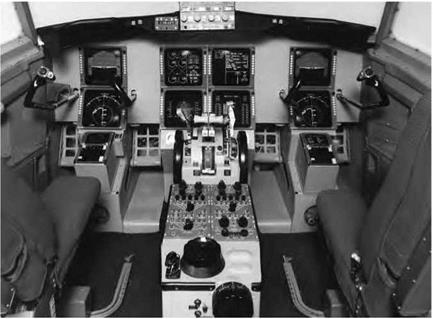Advanced Air Transportation Technologies Program
NASA established this project in 1996 to increase the capability of the Nation’s air transport activities. This program’s specific goal was to develop a set of "decision support tools” that would help air traffic service providers, aircrew members, and airline operations centers in streamlining gate-to-gate operations throughout the NAS.[431] Project personnel were tasked with researching and developing advanced
|
NASA’s Boeing 737 in 1987 after significant cockpit upgrades. Note its much more user-friendly "glass cockpit” display, featuring eight 8- by 8-inch color monitors. NASA. |
concepts within the air traffic management system to the point where the FAA and the air transport industry could develop a preproduction prototype. The program ended in 2004, but implementation of these tools into the NAS addressed such air traffic management challenges as complex airspace operations and assigning air and ground responsibilities for aircraft separation. Several of the technologies developed by this program received "Turning Goals into Reality” awards, and some of these—for example, the traffic management adviser and the collaborative arrival planner—are in use by ATC and the airlines.[432]











